Krakow / Auschwitz / Birkenau -
March 2005

2005 was the 60th anniversary of liberation of prisoners from Auschwitz and as Poland had entered the European Union in 2004 it was very easy and inexpensive to visit.
I'll admit I've wanted to visit a death camp for a while now. On hearing that, some people think I'm a little 'sick', others squirm and tell me not to use the phrase 'death camp', it's a concentration camp. But like it or not, Auschwitz was a death camp, and using politically correct labels or pretending these things didn't happen doesn't change the past. By seeing things for myself I could finally begin to understand the horror of what happened.
That said, there are a few photos here that some people might not want to see, so you have been warned.
To begin, my flight to Poland took me to the city of Krakow. In March I was a little surprised to find it was -3°C, but I suppose that's normal for Poland. Thank goodness I took my leathers with me.
Krakow has a very well preserved medieval city centre that is now a UNESCO World Heritage site. The market square and the buildings surrounding it are protected by the Old Town Walls; following the walls is the Planty, a small park that forms a ring around the Old Town.
In the Market Square you will find the Town Hall Tower, all that remains of the original Town Hall that was destroyed in the 19th century. Curiously the tower leans slightly, just 55cm or about 22 inches, due to a strong wind in 1703! There is also the Cloth Hall that has an arcade of shops selling all manner of Polish crafts. There is also St. Mary's Church with it's twin towers overlooking the square.
At the Southern end of the Old Town on a hill is Wawel Royal Castle and Cathedral. The castle is now a museum, the cathedral was the coronation and burial site for Polish monarchs.
About 40 miles from the city of Krakow is Oswiecim, better known to the world as Auschwitz. You can take a train or car to Oswiecim, but there is a guided tour of Auschwitz and Birkenau that is inexpensive and provides a great deal of thought provoking detail.
A little history.
In March 1938 the German Army invaded Austria; one year later they invaded Czechoslovakia. Hitler sanctioned semi-legal measures to seize the businesses and assets of German and Austrian Jews - a process called 'Aryanisation', and permitted his propaganda chief Joseph Goebbels to incite a huge pogrom against Jews in the Reich.
On September 1st 1939 Germany invaded Poland; by the end of the month Warsaw had fallen to the Nazis and during that time Britain and France had declared war on Germany. Hitler's anti-Jewish policy and the declaration of war made life difficult for Jews.
In April and May of 1940 the German Army invaded Denmark, Norway, France, Belgium, Luxembourg and the Netherlands. In May Holland and Belgium were under Nazi control; in June Norway and France were also controlled by the Nazis. Madness and chaos gripped Europe as Hitler devised ways to rid the lands he took of 'undesirables'.
In 1939 Hitler annexed the old Polish town of Oswiecim to the Third Reich as Auschwitz, and a year later the Nazis started the conversion of the town’s abandoned barracks into a concentration camp. First inmates, a group of Polish political prisoners, arrived on June 14, 1940. In addition to Poles there were soon imprisoned Soviet POW’s, Gypsies, and other nationals from the rest of German-occupied Europe.
The entrance to Auschwitz is marked with a sign 'Arbeit macht frei' (work brings freedom). The harsh work, poor nutrition and hygiene combined with the terrible living conditions spread diseases and many prisoners died from illnesses such as typhus.
In September 1941 the SS conducted tests in block 11, killing Poles and Russians using Zyklon B gas. The tests were successful and a gas chamber and crematorium were constructed. After the first women arrived at Auschwitz, sterilization experiments were conducted on Jewish women in block 10.
The full scale of the Nazi atrocities can be seen at Birkenau, a couple of miles away from Auschwitz. As you can see in one of my photos, the size of the Birkenau camp is huge. The camp held as many as 100,000 people at one time.
Unlike Auschwitz, where people were mostly prisoners, labourers or test subjects in experimentation, Birkenau was designed as a death camp. Birkenau is in fact the camp that most people associate with the Auschwitz name. The camp had four crematoria with gas chambers, each able to hold 2500 people. Extermination started in Spring 1942.
Most people arrived at the camp by train; often these people had been offered a chance of 'a new life' and had brought the tools of their trade with them. The rail tracks were extended from Auschwitz station into the camp itself. Sometimes whole transports of prisoners were gassed, at other times young children, along with the sick, weak and old were gassed upon arrival and stronger prisoners would be put to work.
All the belongs of the prisoners were seized, including clothing and spectacles. Even the prisoner's hair and the gold fillings from the teeth of the dead were taken.
My visit to Auschwitz was intensely moving. Seeing the camp in the snow gives a sense of what the people that lived - and died - there went through.
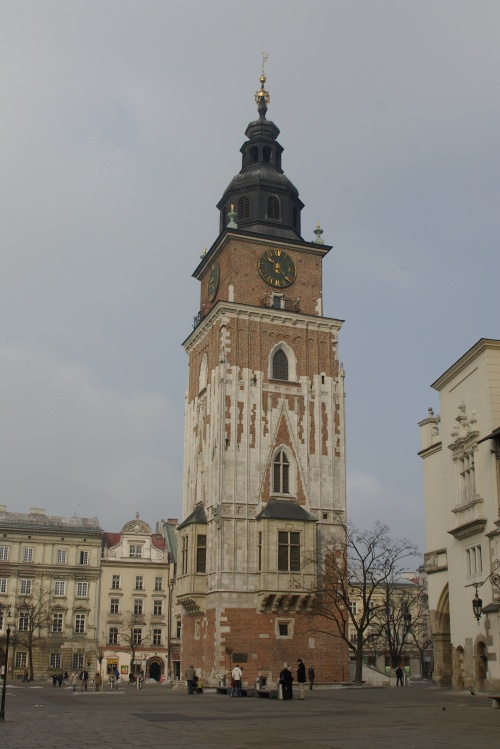
The Town Hall Tower in Krakow

St. Mary's Church
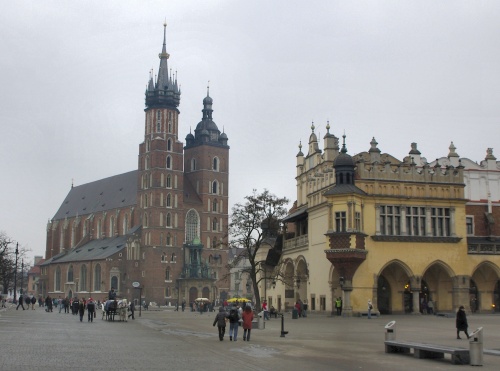
St. Mary's Church again, with the Cloth Hall to the right of the photo

Florianusgate -one of the City Wall Towers

A couple wander through the park surrounding the Old Town
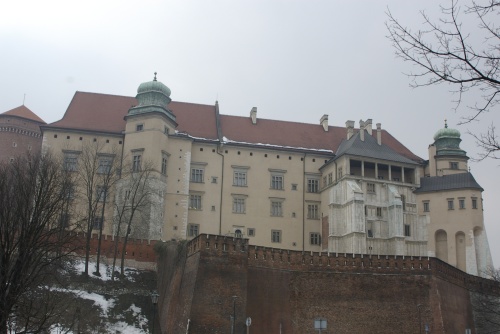
Wawel Castle sits atop the hill
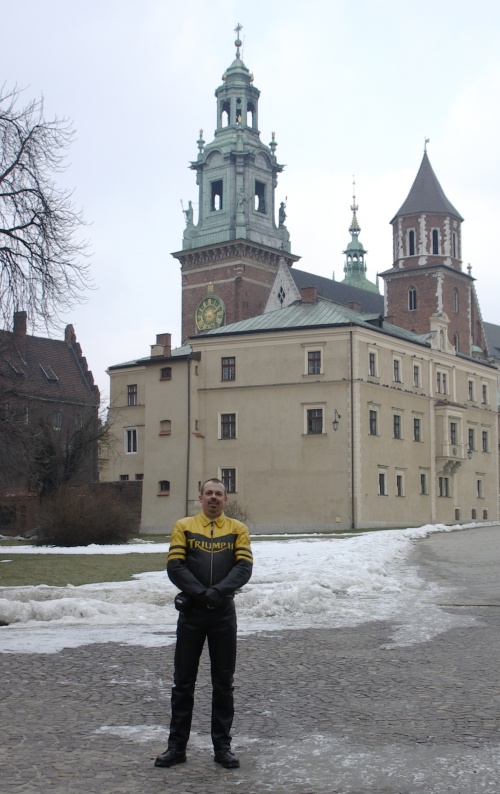
A slightly cold bear poses for a photo by Wawel Cathedral
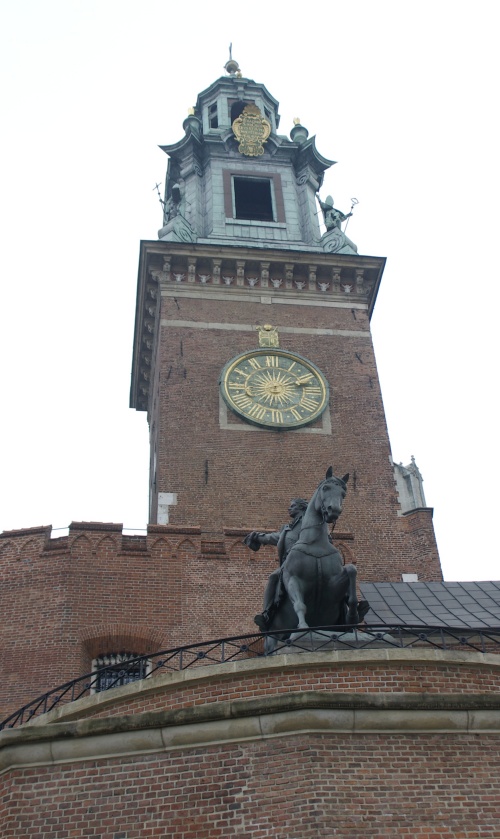
Wawel Cathedral's Clocktower
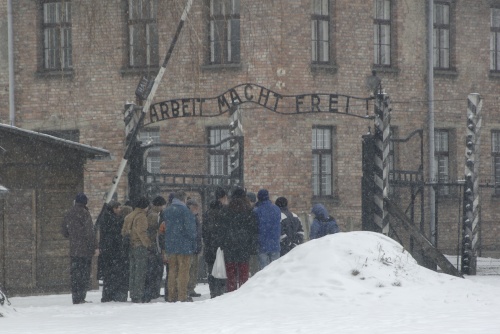
Our group assembles outside Auschwitz

ARBEIT MACHT FREI - the entrance to Auschwitz

The electrified fence around Auschwitz

The signs designed to deter prisoners from approaching the fence
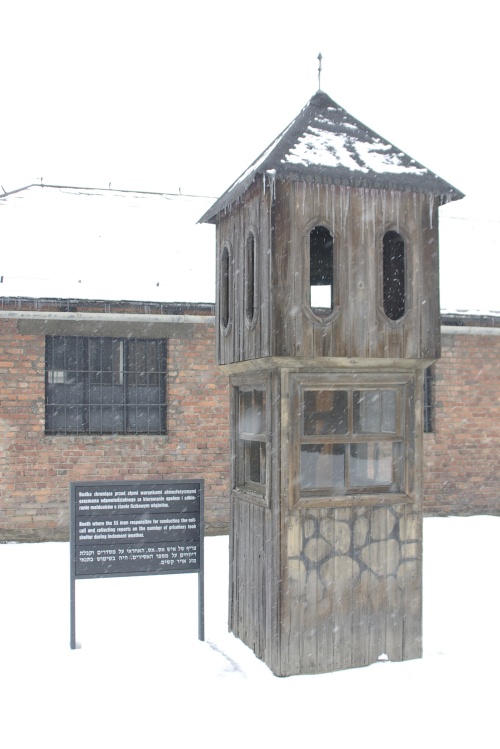
The rollcall booth to protect the SS officer in bad weather
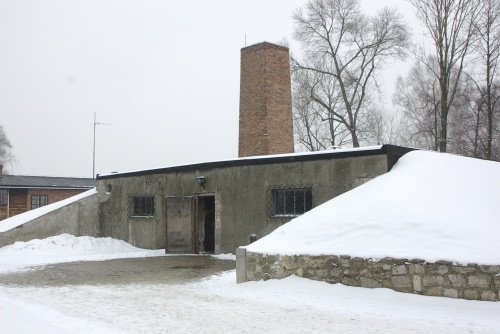
The crematorium
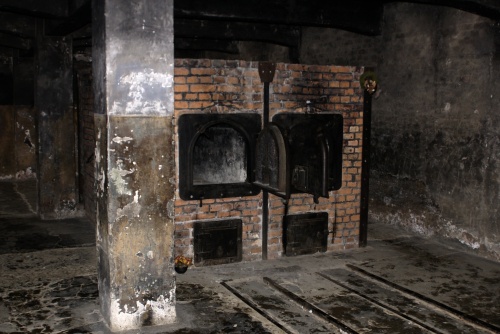
Inside the crematorium you can see the reconstructed ovens

Photos of prisoners inside one of the Auschwitz blocks

The Birkenau entrance, seen from inside the camp
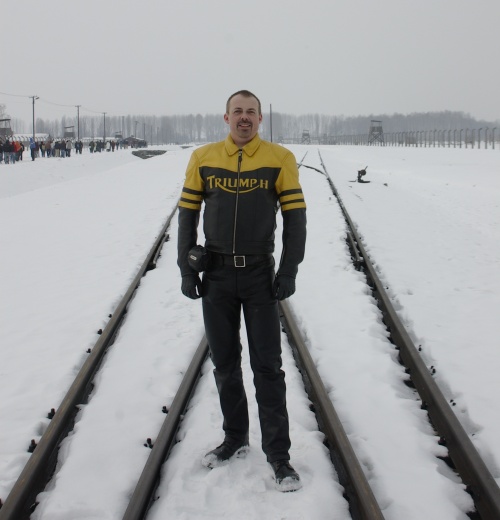
Freezing by the railway tracks just inside Birkenau
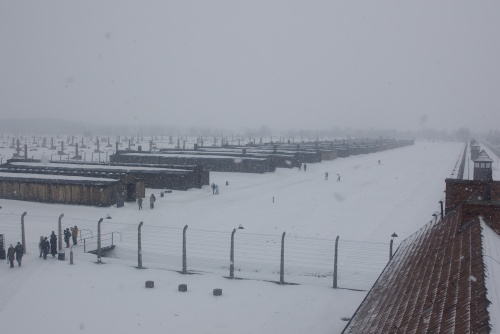
From the central tower you can glimpse the scale of the camp